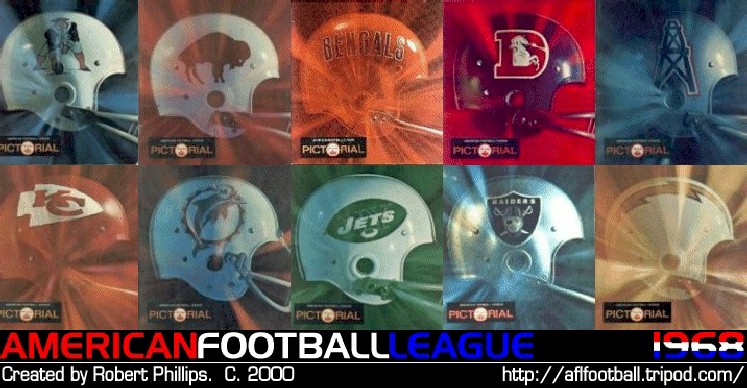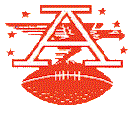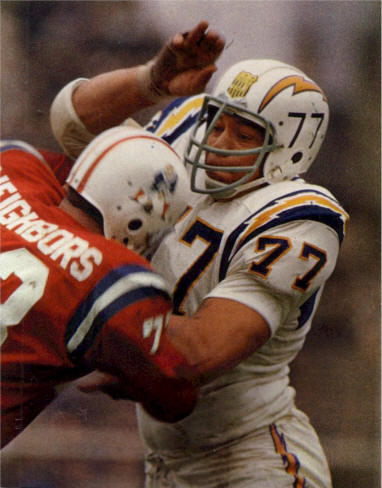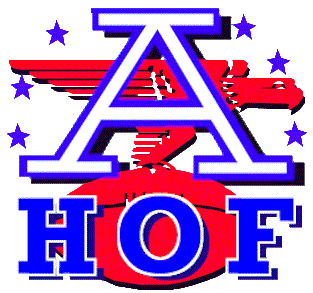 |
 |
 Enlarge Enlarge |
By Denis
Poroy, AP |
 |
|
Former
Chargers
receiver
Lance
Alworth said
the team's
rivalry with
the Raiders
flared up
after Al
Davis left
San Diego to
run the
Oakland
franchise
when both
were in the
AFL. "He
would give
us heck
every time
we played,"
Alworth
said. |
|
 |
 |
 ABOUT
THE AFL
SERIES ABOUT
THE AFL
SERIES |
 |
|
USA TODAY will
celebrate
the American
Football
League's
50th
anniversary
this summer
with a
series of
retrospectives. |
|
 |
|
By Scott Zucker, USA TODAY
If the AFL sought to present itself
as the perfect embodiment of the
1960s — a hip, wide-open alternative
to the stodgier NFL — perhaps no
team better represented that ideal
than the high-flying San Diego
Chargers.
Under innovative
head coach Sid Gillman and a staff that
included Chuck Noll, Bum Phillips and,
perhaps most telling, Al Davis, San
Diego featured a new breed of passing
attack that was unheard of in the
pre-Kennedy era. Gillman, who coached
the NFL's Los Angeles Rams, ran what
Hall of Fame receiver Lance Alworth
calls "the original West Coast offense."
Alworth was the
Chargers' biggest name. He led the AFL
in receiving yards and receptions three
times each and remains the franchise's
all-time leader with 9,584 receiving
yards.
But Gillman had
plenty of other talent. Jack Kemp, who
would become a star in Buffalo, was the
original quarterback before John Hadl
took over in 1962. Hadl twice led the
AFL in passing, and only Hall of Famer
Dan Fouts has surpassed Hadl's 26,938
passing yards and 201 touchdown throws
in San Diego.
The backfield
also featured Paul Lowe, who led the AFL
in rushing in 1965. Hall of Fame tackle
Ron Mix anchored a strong offensive
line.
"It was the most
explosive offense I'd ever seen," Mix
said recently from his San Diego law
office. "We were doing things that
weren't done by other coaches: running
halfbacks into pass patterns, using
(multi-) receiver (formations), running
pitches to the back around end.
"The scheme was
aided by tremendous football talent. At
any moment, you could expect to see Paul
Lowe, Keith Lincoln or Lance Alworth
exploding for a touchdown."
That quick-strike
approach helped the Chargers to the AFL
Championship Game five times between
1960 and 1965. But they walked away with
only one title, a 51-10 drubbing of the
Boston Patriots in 1963 when San Diego's
offense paced the AFL in points scored
and yards gained.
Alworth and Mix
agree that the defense played by teams
such as the Buffalo Bills and Houston
Oilers hindered their ability to win
numerous titles. Alworth also feels
injuries played a major factor in his
team's failure to win multiple AFL
crowns.
"I had been hurt
in the previous game, I found out years
later," Alworth says of a knee injury
that hampered him in the team's 20-7
loss to the Bills in the 1964 title
game. "I had torn an ACL."
Mix has other
ideas about why the Oilers bested the
Chargers in 1960 and 1961.
"The Houston
Oilers had done a great job of putting
together a team and had gotten NFL
players," Mix says of a club that signed
NFL veteran George Blanda as its
quarterback and halfback Billy Cannon,
winner of the 1959 Heisman Trophy. "They
bought the championship."
While the Bills
and Oilers gave the Chargers problems in
the postseason, their biggest rivals
were situated just up the coast in
Oakland. Davis' defection to the Raiders
in 1963 helped set the stage for a
decades-long rivalry.
"Sid Gillman
created the rivalry," Mix says. "To Sid,
the ultimate act of disloyalty was to
leave his coaching staff. ... Before Al
got to the Raiders, we used to beat them
by 40 points a game. He took great
pleasure in turning that around. Not
because it was (his former team), but
because the Chargers were the gold
standard at that time."
Alworth makes it
clear that Davis also fueled the
rivalry. "He would give us heck every
time we played," he says.
But Alworth
admits that he owes much of his success
to Davis, who recruited him out of
Arkansas and converted him from running
back to receiver. Alworth calls Davis "a
very knowledgeable guy, a great judge of
character and athletes."
While the offense
got all the attention, Mix says the
defense played a huge role in San
Diego's success.
"The defense was
really overlooked," Mix says of a group
that was consistently ranked near the
top of the AFL. "Every time (they took
the field), it was three-and-out. Chuck
Noll, Jack Faulkner and Bum Phillips
were outstanding coaches."
But AFL battles
aside, Mix admits that the biggest
rivalry in those days was with the NFL.
He talks about being drafted by the
powerful Baltimore Colts and recounts
how their offer fell far below San
Diego's.
"I told (Colts
owner) Carroll Rosenbloom about the
Chargers' offer, and he said, 'Go ahead,
take it. That league's going to fold
anyway.'
"That's how they
viewed it. When they lost Joe Namath to
the Jets (who outbid the St. Louis
Cardinals for the QB), that's when they
finally started paying attention."
Both Mix and
Alworth got a taste of the NFL after the
1970 merger. Following a brief
retirement, Mix received an offer from,
of all people, Davis in 1971. He said
playing for his longtime rivals was not
that difficult. "Guys are the same on
every team," says Mix, who started four
games in his lone year with Oakland.
Alworth, a
Houston native, had a different
experience after joining the Dallas
Cowboys, also in 1971. Upon arriving,
Alworth was brought in to meet with head
coach Tom Landry.
"He said, 'Look,
the reason I traded for you was to
block,' " says Alworth, who averaged 55
receptions per season over his nine
years in San Diego but caught 49 balls
total in two years with the Cowboys. "He
said, 'If you block, we'll win the Super
Bowl.'
"And we did."
The Chargers are
still awaiting their first Super Bowl
title. But San Diego will always retain
a championship legacy from its days as
an AFL powerhouse. |


















